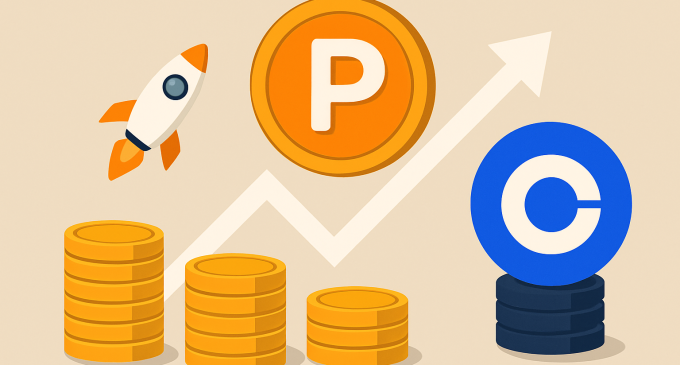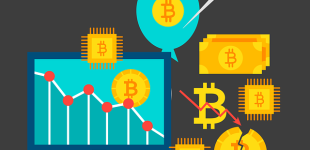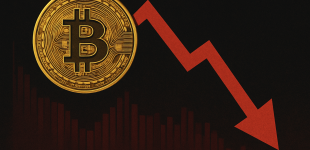
Introduction
The crypto industry has witnessed a number of record-breaking token launches over the past decade, but few can compare to the speed, scale, and spectacle of Pump.fun’s PUMP token. On July 12, 2025, in just 12 minutes, Pump.fun managed to raise an unprecedented $500 million through a public Initial Coin Offering (ICO), selling 125 billion tokens and setting the crypto space ablaze with excitement, speculation, and scrutiny. The event, already being labeled by some as the defining ICO of the year, became even more historic when Coinbase announced it would list the PUMP token just days later, on July 15.
The convergence of meme coin energy, high liquidity, rapid exchange onboarding, and staggering capital inflows has elevated the PUMP token beyond a simple project—it has become a case study in modern token economics and crypto marketing. But behind the hype lies a more nuanced story involving token distribution strategy, investor sentiment, market volatility, and evolving regulatory perceptions.
The ICO That Shook The Markets
The PUMP ICO was remarkable not only for the amount raised but also for how quickly the offering sold out. At a price of $0.004 per token, 125 billion PUMP tokens were scooped up in less than 15 minutes. Combined with a private sale of 175 billion tokens for $700 million, the project amassed $1.2 billion in total funds within a matter of days.
Pump.fun managed to capture the attention of both retail investors and institutional observers by crafting an extremely efficient and transparent fundraising campaign. The speed and scale of the sale evoked comparisons to early Ethereum and Solana ICOs, but with one critical difference: Pump.fun executed this in the context of a fully mature and highly saturated crypto market.
This feat was accomplished on the Base network, a Layer 2 solution built on Ethereum by Coinbase itself. The technical architecture allowed for low gas fees, rapid confirmations, and seamless integration with mainstream DeFi platforms. The strategic use of Base also allowed the ICO to draw in users from Coinbase’s massive user base, building hype prior to the listing on the same platform.
Tokenomics And Market Liquidity: A Rare Approach
One of the more unique aspects of the PUMP ICO was the project’s commitment to unlock all ICO tokens within 48 to 72 hours post-sale. This meant over 55 percent of the token’s total supply would immediately become tradable on the open market.
This is in stark contrast to the more common practice in ICOs, where projects impose vesting schedules and lock-up periods to avoid sudden sell-offs and artificial inflation. Pump.fun’s decision was bold. On one hand, it gave investors immediate control over their holdings, increasing trust and transparency. On the other, it raised serious concerns about price volatility and the possibility of coordinated dumps by early investors.
The total tokenomics of PUMP revealed that just 15 percent of the supply was allocated to the public sale, with another 18 percent reserved for private investors. That means over two-thirds of the token supply remains in the hands of the project’s team, treasury, ecosystem incentives, and liquidity reserves. While this isn’t uncommon, the centralization of token supply has caused some unease among analysts who worry about long-term sustainability.
Coinbase Listing: Legitimacy Or Hype Machine?
The listing of PUMP on Coinbase was both a signal of legitimacy and a catalyst for even more market activity. Typically, Coinbase listings are reserved for tokens that meet certain regulatory, technical, and community thresholds. The fact that PUMP was greenlit within 72 hours of its public ICO has raised eyebrows.
Critics argue that Coinbase’s role in launching Base, the very network where the ICO took place, suggests a potential conflict of interest. Supporters, however, point to the project’s explosive popularity and argue that it would be irresponsible for any major exchange to ignore such a monumental launch.
The listing also introduced PUMP to a broader investor base—those who may not have participated in the ICO but were interested in the token’s potential for short-term gains. As expected, the market responded enthusiastically. By the time the token went live on Coinbase, PUMP was already trading 40 to 54 percent above its ICO price on various secondary markets such as Hyperliquid.
The Coinbase listing further boosted liquidity, drawing in new buyers and speculative traders hoping to capitalize on the token’s early momentum. Within hours of launch, trading volumes surged, making PUMP one of the most active tokens on the exchange for the day.
Market Performance And Investor Sentiment
In the first 48 hours after the ICO, PUMP’s price performance validated the enthusiasm of its backers. The token saw a 50 percent price increase on multiple trading platforms, driven largely by aggressive speculation and strong community engagement on social media platforms like X and Discord.
However, the price movements were anything but stable. The large number of unlocked tokens in circulation led to rapid fluctuations, with whales executing large sell-offs, creating temporary dips that were quickly bought up by smaller investors. Analysts warned that this behavior is unsustainable in the long term and could erode trust if not managed properly.
Despite these concerns, the majority of early investors appear bullish. Much of the optimism stems from Pump.fun’s unique vision: a platform that blends meme coin culture with innovative DeFi applications, including on-chain gamification, staking incentives, and potential governance features. The promise of future utility and ecosystem development continues to drive demand for the token.
Token Burn Controversy
Adding to the whirlwind of events, a user accidentally burned 10 million PUMP tokens—worth approximately $75,000—by mistakenly sending them to an incorrect address. This incident, while unfortunate, served as a reminder of the risks involved in handling digital assets.
Ironically, the accidental burn may have helped the token’s price, as the total circulating supply was marginally reduced. The event became a viral talking point within the community and fueled debates around wallet safety and the need for built-in safeguards in token contract designs.
Pump.fun responded by reaffirming its commitment to educating users on best practices for crypto storage and transaction execution, signaling that they aim to balance community growth with user security.
The Debate Around Decentralization And Fair Launch
One of the most persistent criticisms of the PUMP launch concerns the distribution model. While the public ICO was successful in raising massive capital, only 15 percent of the supply was made available to everyday investors. The remainder was split among private investors and team reserves.
Some industry watchers argue that such a distribution model undermines the spirit of decentralization. Others point out that almost all modern token launches follow similar structures due to investor demand for ROI predictability.
Pump.fun, for its part, has pledged that the remaining locked tokens will be gradually integrated into the ecosystem through liquidity farming, community incentives, and DAO governance frameworks. Still, the perception that the token is disproportionately held by a few wallets continues to color discussions around fairness and decentralization.
Regulatory Implications And The Road Ahead
With a $1.2 billion fundraising total and high-profile exchange listing, PUMP is now on the radar of global regulators. While Pump.fun has not been accused of any wrongdoing, the sheer scale and speed of the ICO have raised questions about disclosure obligations, investor protections, and long-term project compliance.
The Base network affiliation with Coinbase could invite further scrutiny, particularly if market volatility leads to retail losses. Given that regulators are increasingly focused on ICO transparency and exchange accountability, it’s likely that the PUMP case will be cited in policy discussions in the coming months.
Looking forward, the Pump.fun team has outlined an ambitious roadmap. It includes new DeFi integrations, NFT-based reward systems, multi-chain token interoperability, and an innovative gamified trading platform. If successfully delivered, these features could cement PUMP’s status as more than just another meme token—it could evolve into a full-fledged digital asset ecosystem.
Conclusion
The PUMP token launch encapsulates everything that defines the modern crypto industry—ambitious innovation, rapid execution, speculative frenzy, and contentious debates over decentralization and fairness.
Whether PUMP will sustain its momentum remains to be seen. Much will depend on how the team delivers on its roadmap, manages liquidity, and navigates the increasingly complex regulatory environment. But one thing is clear: with a record-breaking ICO, swift Coinbase listing, and a passionate community, Pump.fun has already secured its place in the crypto history books of 2025.







There are no comments at the moment, do you want to add one?
Write a comment